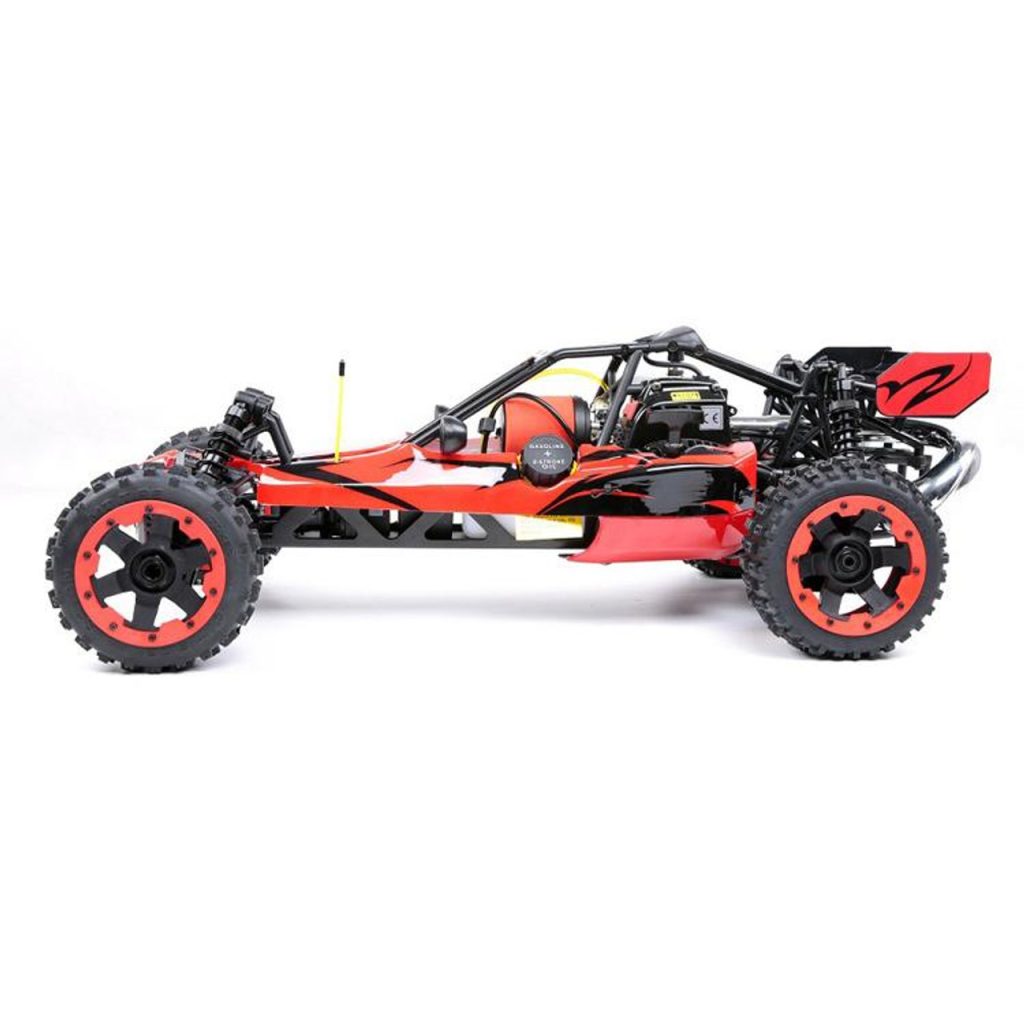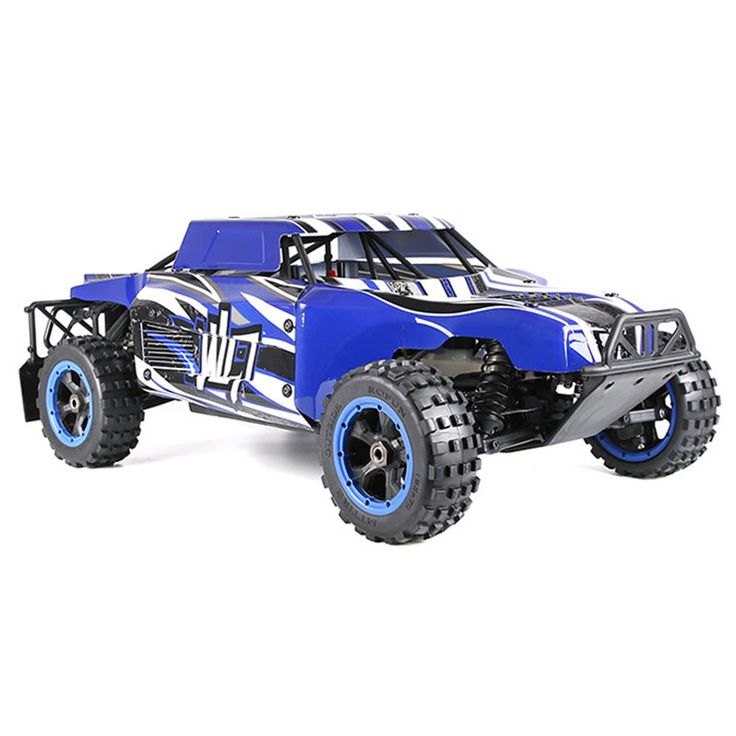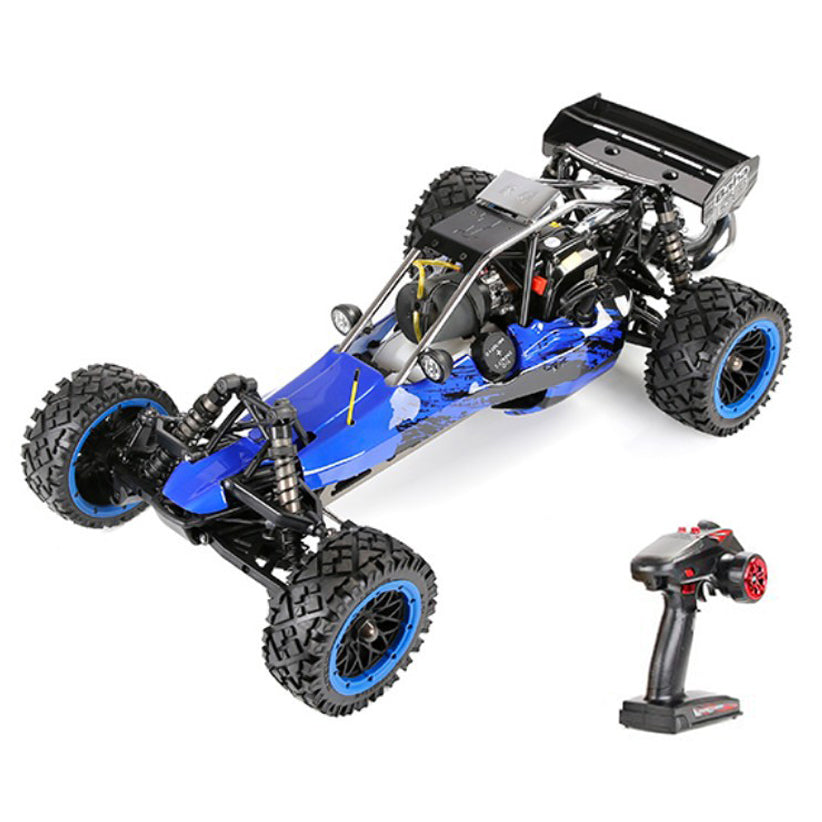Introduction to Gas RC Cars
Gas remote-controlled (RC) cars have become increasingly popular among hobbyists and enthusiasts. These vehicles use gas-powered engines, delivering impressive speed and performance compared to their electric counterparts. The thrill of controlling a fast car combined with the exhilarating sounds of an internal combustion engine creates an engaging experience.
Gas RC cars are often favored for their longer run times and high-speed capabilities. They are available in various models and scales, catering to different preferences. Whether you are a beginner or an experienced driver, the variety ensures you can find a model that suits your needs. This guide will explore the features of gas RC cars, how to choose the right one, maintenance needs, and tips for enhancing your driving experience. By understanding these aspects, you can enjoy your gas RC car to the fullest.
Understanding Gas RC Cars
Types of Gas RC Cars
Gas RC cars come in several types, each designed for different driving conditions and user preferences. The most common types include on-road, off-road, and monster trucks.
On-road gas RC cars are designed for speed and agility, featuring lower chassis and slick tires for improved handling on paved surfaces. They are perfect for racing on smooth tracks or long straight paths.
Off-road gas RC cars are built for rugged terrains. With higher ground clearance, larger tires, and a more durable frame, these cars perform well on dirt, gravel, or grassy tracks. They typically come with robust suspensions that absorb impacts, making them suitable for bumpy surfaces.
Monster trucks are larger vehicles with oversized tires and powerful engines. They are designed for extreme off-road conditions and can easily crush obstacles. Monster trucks offer a different driving experience, focusing on fun and recreational use rather than speed.

Engine Types and Sizes
Gas RC cars generally use two-stroke or four-stroke engines, each with distinct characteristics.
Two-stroke engines are lightweight and offer high power-to-weight ratios. They are commonly found in racing models due to their ability to achieve high speeds quickly. However, two-stroke engines can be less fuel-efficient and produce more emissions.
Four-stroke engines are known for their longevity and fuel efficiency. They provide smoother power delivery and are often quieter than two-stroke engines, making them ideal for casual driving and long-duration use. Four-stroke engines may have lower top speeds but excel in providing a consistent driving experience.
Additionally, gas RC cars come in various engine sizes, typically measured in cubic centimeters (cc). Larger engines provide more power and speed, while smaller engines can offer better maneuverability and control. When selecting an RC car, consider your driving style, preferences, and the environment in which you plan to operate the vehicle.

Choosing the Right Gas RC Car
Determine Your Skill Level
Before purchasing a gas RC car, it’s essential to assess your skill level. Beginners may seek models that are easier to control and operate, while experienced drivers may prefer high-performance options that offer more speed and advanced features.
For beginners, consider purchasing ready-to-run (RTR) cars. These models come fully assembled and pre-tuned, meaning you can start driving right away. RTR cars are typically equipped with beginner-friendly features, such as stability controls, making them easier to handle.
Advanced enthusiasts may prefer kits that require assembly. These kits typically allow customization, enabling users to modify and upgrade components to enhance performance. This choice is suitable for those who have experience and enjoy the technical aspects of RC cars.
Budget Considerations
Setting a budget is crucial when selecting a gas RC car. Prices can vary widely based on brand, type, size, and features. Entry-level models designed for beginners can start around $150, while high-performance and specialized models can cost upwards of $1,000.
It’s important to consider not just the initial purchase price but also ongoing costs associated with maintenance, fuel, and spare parts. Budgeting for upgrades or repairs is also essential, as these costs can accumulate over time. Investing in quality batteries, fuel, and maintenance tools can enhance your overall experience and prolong the lifespan of the vehicle.

Maintenance and Care for Gas RC Cars
Routine Maintenance Tasks
Taking care of your gas RC car is essential for ensuring optimal performance and longevity. Regular maintenance tasks can prevent issues and keep your car running smoothly.
Start by cleaning the vehicle after each use. Remove dirt, grime, and debris, especially around the engine and undercarriage. A soft brush or compressed air can effectively eliminate dirt from hard-to-reach areas. This cleaning prevents buildup that can negatively affect performance.
Checking the fuel system is another crucial maintenance task. Regularly inspect the fuel lines and filter for clogs or leaks. Ensure that the gas mixture is correct and that you are using high-quality fuel. Inspecting and cleaning the air filter will also help maintain engine performance.
Engine Maintenance
The engine is the heart of any gas RC car, and proper maintenance is crucial for ensuring its efficiency and lifespan. Change the fuel filter according to the manufacturer’s recommendations, and check the spark plug regularly. A carbon build-up can impede performance, so clean or replace the spark plug as needed.
Lubrication is key to engine health. Use the appropriate oil for gas engines to lubricate moving parts regularly. This practice reduces friction and wear, helping the engine run smoothly. Additionally, perform periodic adjustments to the carburetor to ensure optimal fuel-air mixtures for efficient performance.
Enhancing Your Gas RC Car Experience
Upgrades and Modifications
For enthusiasts looking to enhance their gas RC car performance, various upgrades and modifications are available. A common area for improvement is the suspension system. Upgrading to high-quality shocks and springs can greatly enhance handling and stability during fast turns and rough terrain.
Another popular modification is upgrading the motor or engine. A more powerful engine can increase speed and acceleration, giving you a competitive edge in races. Additionally, consider adding lightweight components, such as carbon fiber or aluminum parts, to reduce weight and improve speed.
Tires also play a crucial role in performance. Choosing specialized tires suited for specific terrains can improve grip and traction. Whether racing on pavement or navigating off-road trails, upgrading tires can significantly impact driving performance.
Joining the Gas RC Community
Getting involved in the gas RC community can greatly enhance your experience and knowledge. Local clubs and online forums provide opportunities to connect with other enthusiasts. These platforms can be valuable resources for learning tips, sharing experiences, and discovering new techniques.
Participating in club events or competitions is an excellent way to test your skills and enjoy friendly competition. Many clubs host races, allowing you to connect with like-minded individuals. Sharing your passion for gas RC cars can create friendships and valuable networking opportunities within the community.
Safety Considerations
Operating Your Gas RC Car
Operating a gas RC car requires attention to safety, especially when driving in public or crowded areas. Always follow local laws regarding RC car operation and avoid areas with heavy foot traffic or hazards. Choosing a designated track or open space ensures that you and those around you remain safe while enjoying your hobby.
Safety gear is also important. Consider wearing safety goggles when driving in dusty conditions or during races. If you plan to perform tricks or stunts, use protective equipment to ensure your safety and that of others. Understanding and adhering to safety guidelines promotes a positive experience for everyone involved.
Storing Your Gas RC Car
Proper storage is essential to maintain your gas RC car in good condition. Always store the car in a cool, dry place to prevent damage from extreme temperatures or humidity. Leaving the car in hot environments can cause fuel and engine deterioration.
Before storing the car for an extended period, clean it thoroughly and perform maintenance tasks. Empty the fuel tank and clean the engine to prevent residue buildup. Disconnect the battery and store it according to manufacturer guidelines to prolong its lifespan. Taking these steps ensures the vehicle remains ready for action whenever you are.
Conclusion: Enjoying Your Gas RC Car Experience
In conclusion, gas RC cars offer enthusiasts a unique blend of speed, performance, and rugged durability. Understanding the essential features, maintenance needs, and styling options can significantly enhance your enjoyment of this exciting hobby. Selecting the right gas RC car based on your skill level and budget will ensure a satisfying experience from the start.
Investing time in proper care and maintenance leads to improved performance and a longer lifespan for your vehicle. Exploring upgrades and engaging with the gas RC community will deepen your appreciation for the hobby. Embrace the thrill of driving your gas RC car, and make the most of the fun and excitement it brings.
Gas RC cars are more than just toys; they are vehicles that provide adventure, camaraderie, and a sense of achievement. Whether racing against friends or cruising through your neighborhood, the thrill of controlling a gas-powered machine is unparalleled. Enjoy the journey, celebrate the experience, and make lasting memories with your gas RC car!
